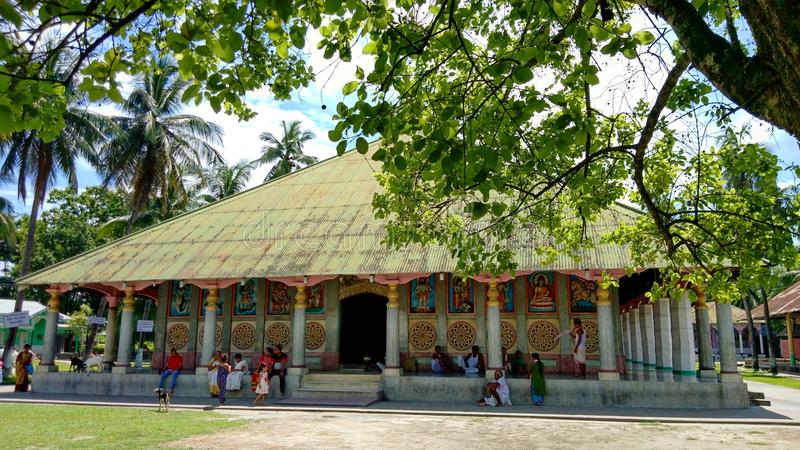
A snapshot of Barpeta Sattra
The word Sattra originates from the Sanskrit word in Bhagavata Purana, means Yagya (sacrificial session), which extended over a relatively long time period. According to the Vedic literature the yagya that persisted more than 12 days were known as Sattra Yagya.
Sattras are known as the religious, cultural and social hub of Assam. There were several disagreements in terms of Sattra’s definition, but the definition given by Baikuntha Nath Bhagavat Bhattacharya in his book “Saran Sangrah” where he described about the Sattra’s of Assam probably was the earliest and classic definition of Sattra. He mentioned – Yatracharanti Shadhanarnag Kewola Bhagavata Priya/ Nabadha Bhavatbhakti Pratyahong Yatrabartate// Tat Sattrang Uttamang Khetrong Vaishnava Suravantitam/ Tratatsha Vaishnava: Sharbe Harinam Porayana//
The above is translated into the following:
“The place which is enlightened by the presence of deity and the votaries of Lord Vishnu, the place where the devout votaries perform God’s favourite activities of worshipping, the place that witnesses the nine forms of devotion on daily basis, that great place is known as Sattra” (The nine form of devotion are –“Shravan” means listening, “Kirtan” means devotional singing, “Smaran” means remembering, “Archan” means adoration, “Padxewan” means saluting at the feet, “Dashya” means servitude, “Xakhitya” means friendship, “Bandan” means salutation, “Deharpan” means sacrificing the body)
The origin of the Sattra in Assam could be traced in the end of 15th century or the beginning of 16th century when the Neo Vaisnavite Movement was initiated by Srimanta Sankaradeva, where he stayed and preached through congregational prayer and religious discourses. Bardowa is known as the first Sattra of Assam and over the century from Koch kingdom to Ahom kingdom many Sattras were established. The chief of a Sattra is Called a Satradhikar.
The main aim of Sattra was to develop a healthy and orderly society through moral and spiritual education. From religious cultural to art all aspects were discussed in Sattras and it played a tremendous role and contributed immensely towards the Assamese culture and society by the Guru and monks and these things greatly assisted to form a creative environment by giving innovative dimensions of various arts like music, dance, drama, painting, sculpture mask making and costume designing etc. Later on the dance form that was initiated and developed within the sattras, as a medium of prayers known as Sattriya Nritya now a days, which is one of the eight classical dance forms in India. Apart from all these, few qualities were developed and taught in Sattras like living a simple life, morality, character formation, integrity, adjustment, respect etc. to being a complete person.
Structure wise a Sattra contains four main parts as mentioned below. All structures were originally made of wood, bamboo and covered over with thatch. After 18th century, the use of brick and mortar has become common.
(1) Manikut (Jewel house), an additional independent structure on eastern side, a holy place, where the asana (a wooden tetrahedral structure with four carved lions) is placed containing the main object of worship. Another name of Manikut is Bhajghar.
(2) Namghar or Kirtanghar, a rectangular prayer-hall (length: 35-70 m, breath: 17-35 m) at the aligned in the east-west direction of Manikut.
(3) Sarihati, the Kirtanghar is surrounded by four straight rows of huts, called hati, in which adhikara, monks (bhakats) and other high officers reside.
(4) Batsara or Karapat, the main gateway of sattra.
List of a few popular Sattras of Assam-
Some of cultural programs those are held in Sattras are like – Ankiya Bhaona, Krishna Janmashtani, Paalnam, Doul Utsav or Holi, Rashleela etc.
